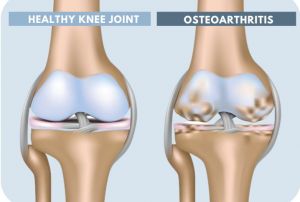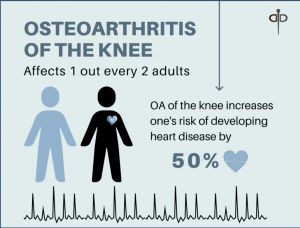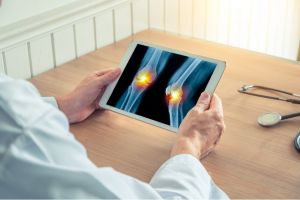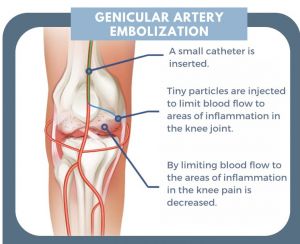How to Treat Osteoarthritis (OA) of the Knee
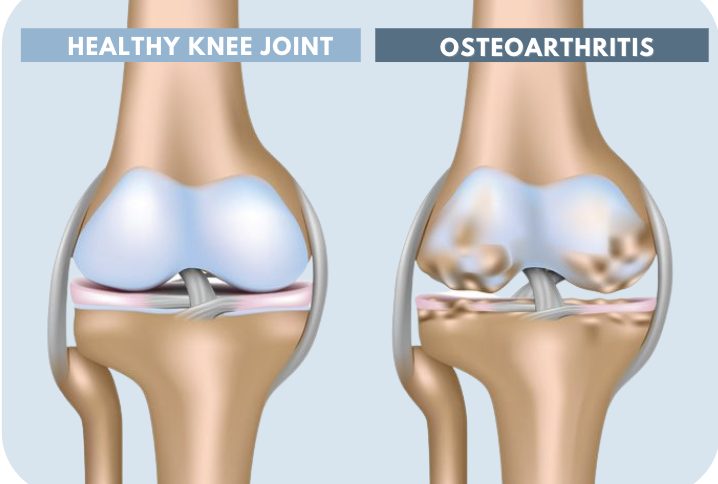
Osteoarthritis (OA) of the knee, also known as the “wear and tear disease,” currently affects over 10 million Americans. It is the most common form of arthritis as 1 in 2 adults will develop the condition at some point in their lifetime. The commonality of this condition makes minimally invasive treatment options a top priority. Here at Pedes Orange County, we offer an alternative to the typical treatment options for osteoarthritis of the knee: Genicular Artery Embolization (GAE).
What is Osteoarthritis of the Knee?
Osteoarthritis of the knee develops when the spongy material in our joints called cartilage begins to deteriorate. Cartilage is used as a soft material that buffers contact between the bones in our body. When it begins to wear away, bones rub together, which can be painful. Once cartilage begins to erode, it cannot grow back on its own.
Symptoms for Osteoarthritis of the Knee
Painful symptoms associated with OA of the knee develop gradually and worsen over time. The pain occurs as the joint lining in the knee becomes inflamed. Symptoms typically begin to develop in patients between the ages of 60-79. Patients suffering from osteoarthritis of the knee may experience the following symptoms.
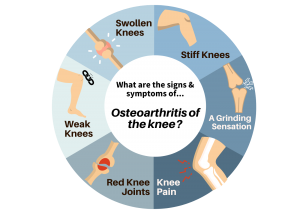
Risk Factors for Osteoarthritis of the Knee
Certain factors can put individuals at higher risk for developing osteoarthritis of the knee. The following traits may put patients at higher risk.
Old age
Osteoarthritis of the knee is one of the most frequent causes of physical disabilities among the elderly.
Gender
By age 60, osteoarthritis of the knee is up to 70% higher in women.
Genetics
Individuals with a family history of OA are at higher risk of developing the disease. Osteoarthritis of the hand also increases one’s risk of developing OA of the knee.
Obesity
Added weight puts stress on the joints, especially in the hips and knees. Obesity may also have metabolic effects that increase the risk of OA.
Repetitive stress on a joint
Overexerting the knee through excessive bending or stress to the joint can wear it down, thus increasing the risk of developing OA.
Treatment Options for Osteoarthritis of the Knee
Though the symptoms of Osteoarthritis can be managed, joint damage cannot be repaired. Patients suffering from osteoarthritis of the knee have an array treatment options to choose from.
Medication
Anti-inflammatory medications like acetaminophen, aspirin, and ibuprofen can all help with pain management.
Therapy
Physical or occupational therapy supports muscle building. Stretching exercises keep muscles from getting stiff or sore.
Injections
Steroid shots can also be injected into the joint by a physician to ease aches and pains.
Surgical Procedures
Partial or complete knee joint replacement should be considered after all non-surgical options have been attempted.
If you are looking for a minimally invasive alternative to treat your osteoarthritis of the knee that can help you to achieve long term pain relief, a Genicular Artery Embolization (GAE) procedure, may be best for you.
Genicular Artery Embolization for Osteoarthritis of the Knee
This minimally invasive, non-surgical procedure can provide immediate and long-term pain relief for patients with osteoarthritis. GAE works by limiting the blood flow in the arteries of the knee that leads to abnormal inflammation. This reduces the increased blood flow in the lining of the knee. Limiting the blood flow to the inflamed portion of the knee joint helps to break the cycle of inflammation and ease the pain associated with OA.
GAE is an outpatient procedure, that requires no general anesthesia or overnight stays in the hospital.
How does Genicular Artery Embolization for Osteoarthritis of the Knee Work?
The GAE procedure takes 1-2 hours. During GAE, your vascular specialist inserts a catheter through a small needle puncture in the leg and into the blood vessels that supply the knee joint using X-ray guidance. Once positioned, tiny microsphere particles are carefully released to slow the blood supply to the inflamed portions of the knee joint. The decrease in blood flow reduces pain and swelling associated with OA. After the Vascular Specialist removes the catheter, no incision or stitches are required. Patients are monitored for 1-2 hours after the procedure, then released to go home that same day.
In appropriate patients, Genicular Artery Embolization is an alternative option for those who do not wish to undergo or are ineligible for knee replacement surgery and have failed to see benefits from other treatment options. While GAE is not a cure for osteoarthritis, patients experience an increase in quality of life as it reduces the symptoms of OA and the dependency on medications, injections, and therapy. In fact, studies have shown that Genicular Artery Embolization provides symptomatic relief in up to 70% of patients. Long-term joint relief can put miles back into your stride. Contact our Vascular Specialists at Pedes Orange County if you think GAE is right for you.




